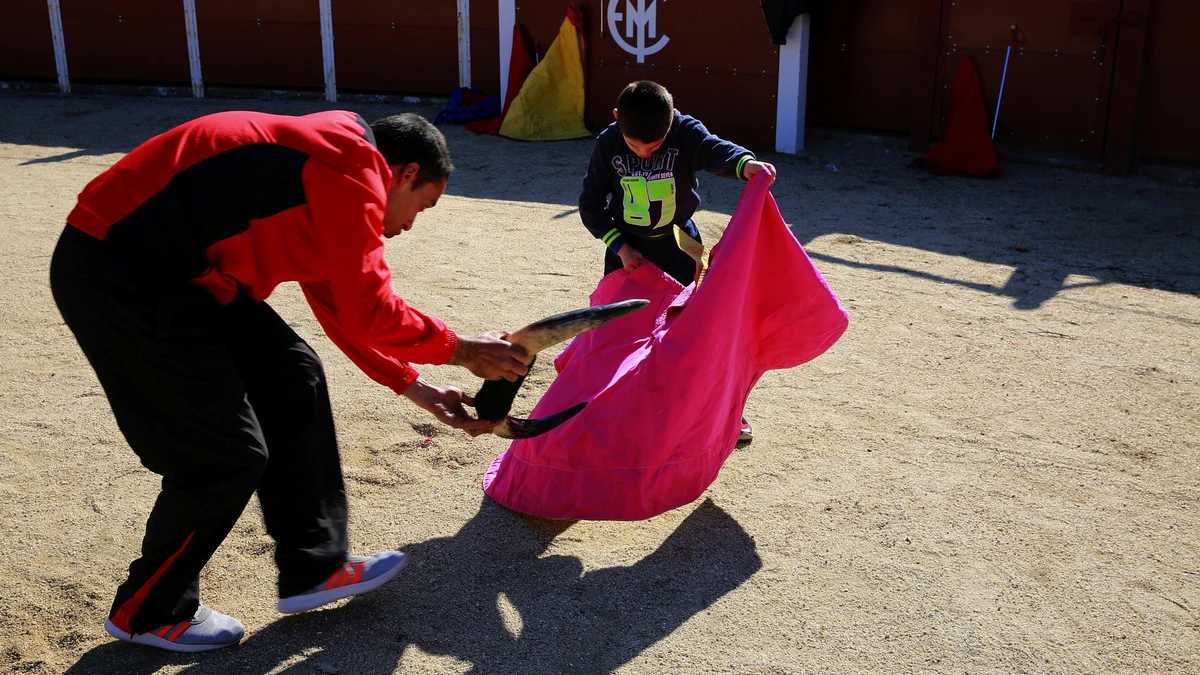Along with moneylines and totals, point spread betting is one of the most popular wagering markets. A point spread moves the favorite and underdog closer with a “handicap” and allows bettors to predict who will cover the spread.
Spread betting is relatively straightforward, and understanding how it works is vital to your sports betting journey.
In this page, we’ll discuss how point spread betting works, explain how to read point spreads, and provide you with real-world examples of spreads in action.
What Is a Point Spread?
A point spread is a handicap that provides a buffer between a favorite and an underdog in a matchup. For example, if a team is heavily favored in an NFL game, you might see them draw a -10.5 spread. Conversely, the underdog in the matchup would draw a +10.5 spread.
These point spreads provide a benchmark for how many points a team is expected to win or lose the game by. In the example above, the favorite would have to win by 11 or more points to “cover” the spread of 10.5 points. The underdog must win the game outright or lose by less than 11 points to cover the spread.
Unlike a moneyline bet, point spread bets don’t always require your team to win the game. If you pick the underdog, you can win your bet if they lose by less than the spread.
How Do Point Spreads Work?
Point spread betting is relatively simple. There’s a favorite and an underdog, and the point spread evens the odds. Moneyline wagers don’t do this, so point spread betting has become attractive to sports bettors.
The institution of spread betting allows you to bet on teams you otherwise wouldn’t. Only some people are interested in taking a longshot moneyline, but you can get the team you’re interested in plus a certain number of points to even it out.
A spread has two sides. The favorite always draws the “-” spread, while the underdog draws the “+” spread. The spread usually contains a “.5” to ensure that there is an outcome and that the wager doesn’t result in a push.
For example, an NFL team is favored at -2.5 points against the spread. Their opponent is automatically an underdog at +2.5. For the favorite to cover the spread, they must win the game by three or more points. For the underdog to cover the spread, they must win the game outright or lose by two points or fewer.
A significant aspect of spread betting is that odds are typically within the -120 to +100 range. Moneyline odds are different and can fluctuate heavily since there’s no handicap in place to even things out.
How to Read Point Spreads
Point spreads come in many different formats and combinations. In this section, we’ll discuss how to read a point spread so you can start placing bets on it yourself.
The Meaning of -110
Most point spreads have -110 odds attached to both sides of the wager. This makes perfect sense, considering that the motivation for a point spread is to bring two opponents in a game as close to even as possible.
Sportsbook apps have to make money somehow, so they charge a roughly 9% commission on your wager at -110. Most bets will be at -110 odds, which means that for every $11 in bets you place, you will get $10 in winnings.
Spread odds can be -120 odds or +100 odds, too. In some sports, these odds can vary even further. MLB’s run line and NHL’s puck line markets can see “spreads” as heavy as -250 or +250 in either direction.
For example, let’s say that the Dallas Cowboys are favored with a -6.5 point spread against the Washington Commanders at +6.5. Both options are -110 odds. If you decide to place a $100 bet on either team, a winning wager would grant you $90.91 in profit.
This is what your options could look like at an online sportsbook:
Cowboys: DAL -6.5 (-110)
Commanders: WAS +6.5 (-110)
Favorite
As alluded to, every game has a favorite. When it comes to betting on a point spread, you can easily tell which team is the favorite by observing whether they have a “-” before the number.
If a team is favored, it must win the game outright by a certain number of points. For example, if a team is favored by 3.5 points, denoted by “-3.5,” it must win the game by at least 3.5 points. Because scoring doesn’t incorporate a half-point, it must win by four or more. Say the Dallas Mavericks are -3.5 against the Chicago Bulls.
Mavericks 115, Bulls 98: Mavericks cover the spread because they won by more than four points.
Mavericks 115, Bulls 112: Mavericks don’t cover the spread because they didn’t win by more than four points.
Underdog
For every favorite, there must be an underdog. The underdog is the team that is less likely to win a game. If you’re searching for a point spread wager to make on an underdog, look for the “+” sign before their number.
For example, the Kansas City Chiefs are +3.5 point underdogs against the Philadelphia Eagles. The Chiefs must win the game outright or lose by less than 3.5 points to cover the spread. Here’s a look at how the spread would work out based on the outcome.
Chiefs 28, Eagles 21: Chiefs cover the spread.
Eagles 27, Chiefs 24: Chiefs cover the spread.
Eagles 33, Chiefs 27: Chiefs don’t cover the spread.
In the above example, the Chiefs can lose the game and still cover the spread. They are given free points against the spread to beat the Eagles.
Pick ‘Em
In rare cases, you might see that two teams’ spreads are listed as “PK.” The two sides are so evenly matched that there is no spread, leading to a wager known as a “pick ’em.” These bets are essentially moneyline wagers, considering you are backing a team +0 against the spread.
Your team must win outright to win a “pick ’em” spread bet. You can push a pick ’em bet in some sports that can tie, like soccer or regulation hockey. A pick ’em is usually listed as -110 odds for both sides.
Possible Outcomes of Point Spread Bets
Point spreads can have three possible outcomes (two if the spread contains “.5”). The favorite or underdog can cover the point spread, or the bet can result in a push. Let’s discuss what each outcome for your point spread bets entails.
Favorite Covers the Spread
One of the options for point spread betting is the favorite covering. The spread with the “-” in front of it wins, with the team that was most likely to win the game also winning against the spread.
When the favorite covers the point spread, your odds are usually -110. Suppose the Miami Dolphins were favored at -9.5 against the New England Patriots, with both sides of the point spread listed at -110 odds. For the Dolphins to win against the point spread, they must win the game by at least ten points.
If we place a $10 bet on the Dolphins -9.5, we earn $9.09 in profit as long as Miami wins by ten or more points.
If Miami wins by nine points or less or loses outright, we lose our $10 bet.
Underdog Covers the Spread
The underdog has a “+” attached to the point spread, like +2.5, +8.5, or +10.5. The underdog is the team that is less likely to win the game, so they get points to help them stay even with the favorite.
As with most bets on the point spread, standard odds are -110. Say the Chicago Bulls are underdogs against the Los Angeles Lakers, denoted by a +7.5 spread at -110 odds. For the Bulls to win against the point spread, they must win outright or lose by seven or fewer points.
If we place a $10 bet on the Bulls +7.5, we earn $9.09 in profit if the Bulls win the game or lose by seven or fewer.
We lose our bet on the point spread if Chicago loses by eight or more.
“Push” or Draw
Point spread bets can result in a push, meaning there doesn’t have to be a clear winner. Pushes can only occur when no half-point is added to a spread. For example, a +7.5 spread must have a decided winner. However, a +7 spread can “push” if the game ends with a victory by the favorite by precisely seven points.
Pushing spread bets is one of the most annoying events in sports betting. You’re extremely close to notching a win but can’t quite get there.
Suppose the Atlanta Falcons are -6 against the spread versus the New Orleans Saints. Say we place $10 on the Falcons at -110 odds.
If the Falcons win by more than six points, the bet wins for $9.09 in profit.
If the Falcons win by exactly six points, it’s a push and we get our $10 back.
We lose the bet if the Falcons win by less than six points or lose outright.
What Is a Negative Spread?
As mentioned throughout this guide to point spreads in sports betting, you can have negative, positive, or pick’em point spread lines. A negative spread that carries a “-” in front is for the favorite in a matchup. Let’s examine samples of how a negative spread works with the final score.
-7 Spread
A -7 spread means the favorite is expected to win by seven points. It’s one of the most common point spread lines, particularly when it comes to NFL and college football betting because of the combined value of a touchdown and an extra point.
Here’s an example. Suppose the San Francisco 49ers are -7 against the spread versus the Los Angeles Rams, listed at -110 odds. We decide to place a $20 bet on the Niners.
If the 49ers win by more than seven points, we have a winning bet for a $18.18 profit.
If the 49ers win by precisely seven points, we have a push and receive our $20 stake back.
We have a losing bet if the 49ers win by fewer than seven points or lose outright.
-3 Spread
A -3 spread means the favorite is expected to win by three points. For the favorite to “cover” the -3 spread, they must win by four more points or more.
Let’s look at an example. Suppose the Boston Celtics are -3 against the spread versus the Los Angeles Lakers, listed at -110 odds. We decide to place a $20 bet on the Celtics.
If the Celtics win by more than three points, we win the bet for $18.18 in profit.
If the Celtics win by precisely three points, we have a push and receive our $20 back.
If the Celtics win by fewer than three points or lose outright, we lose the bet.
-4 Spread
A -4 spread means the favorite is expected to win by four points. For the favorite to “cover” the -4 spread, they must by five more points or more.
Suppose the Minnesota Timberwolves are -4 against the spread versus the San Antonio Spurs, listed at -110 odds. We decide to place a $50 bet on the Timberwolves.
T’Wolves 124, Spurs 108: T’Wolves cover the spread.
T’Wolves 114, Spurs 110: The spread pushes.
T’Wolves 112, Spurs 110: T’Wolves don’t cover the spread.
What Is a Positive Spread?
A positive spread, like +3.5, is the side of a spread attached to the underdog in a game. This buffer afforded to the underdog evens the odds between the two teams. In this section, we’ll explore some examples of different positive spreads. The typical betting odds for a positive spread are -110.
+3.5 Spread
A +3.5 spread indicates that an underdog is expected to lose a game by 3.5 points. A team can’t lose by half points, so it ensures a bet doesn’t push and that there is a clear winner against the spread.
Say that the Bulls are 3.5-point underdogs against the Knicks. Here is how the spread works based on prospective final scores.
If the Bulls lose by three or fewer points or win, they cover the spread.
If the Bulls lose by more than three points, they failed to cover the spread.
+7 Spread
A +7 spread indicates that an underdog is expected to lose a game by seven points. Suppose that the Carolina Panthers are 7-point underdogs against the Buffalo Bills.
The Panthers cover the spread if they lose by six or fewer points or win.
The spread pushes if the Panthers lose the game by precisely seven points.
The Panthers don’t cover the spread if they lose by more than seven points.
+1.5 Spread
While +1.5 spreads are reasonably uncommon in the NFL and NBA, they can be found for almost any NHL or MLB game as a puck line or run line, respectively. It indicates that the underdog is expected to lose by 1.5 points.
Suppose the San Diego Padres are +1.5 run line underdogs against the Los Angeles Dodgers.
If the Padres win outright or lose by a run, they cover the run line.
If the Padres lose by two or more runs, they don’t cover the run line.
+2.5 Spread
A +2.5 spread indicates that an underdog is expected to lose a game by 2.5 points. If the Patriots are 2.5-point underdogs against the Bears, here’s how it could look:
Bears 24, Patriots 23: Patriots cover the +2.5 point spread.
Bears 24, Patriots 21: Patriots don’t cover the +2.5 point spread.
+5 Spread
A +5 spread indicates that an underdog is expected to lose a game by five points. Suppose that the Patriots are five-point underdogs against the Buffalo Bills.
The Patriots cover the spread if they lose by four or fewer points or win.
The spread pushes if the Patriots lose the game by precisely five points.
The Patriots don’t cover the spread if they lose by more than five points.
Point Spread Betting FAQs
We have answered frequently asked questions about the point spread bet and how they work at your favorite online sportsbook.
Why do point spreads change?
Point spreads shift to react to the amount of money and action on each side of a sportsbook. An opening line changes according to various factors and settles at a closing line right before the event begins.
What do I do if one of my point spread bets is canceled?
In rare cases, you might have a point spread bet that gets canceled. You will receive your money back as if you never placed the bet. A spread bet can get canceled for various reasons, including a shortening of a game, weather impacts, etc.
What sport is the best for point spread betting?
The best betting market for point spread betting is the NFL. NFL sportsbooks draw the most handle on spreads.
Can I use a point spread bet in a parlay?
Yes, you can add point spread bets to a parlay. You can combine spreads from any betting market with moneylines, totals, and other wager types.
Can overtime affect the spread?
Overtime can affect the spread in some sports, particularly hockey. In most sports, overtime or extra innings has no effect because the game’s final score after regulation play is all that matters. However, an NHL game betting market allows you to wager on regulation time or the entire game, which includes overtime. This can ultimately affect the puck line or spread.





